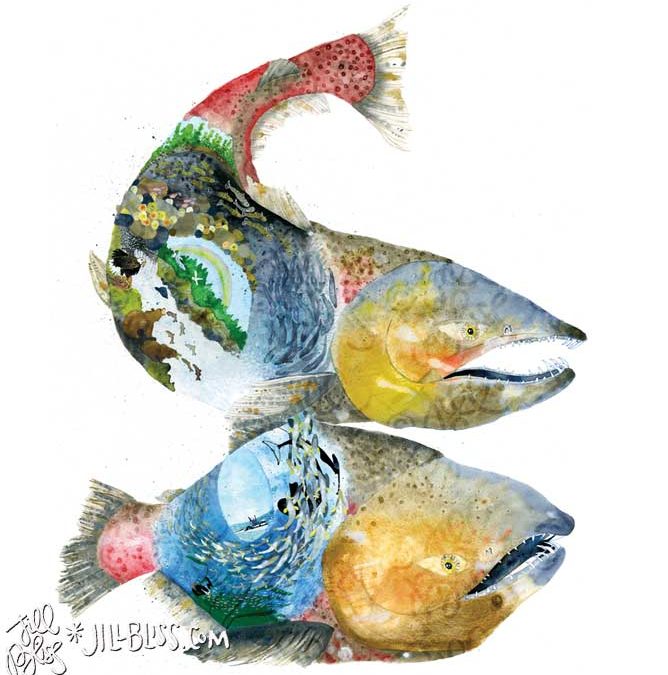The latest devastating headline this week in my local paper is “Feds reject removal of 4 Lower Snake River dams”.
From The Seattle Times:
“Federal agencies found that taking out the dams would “provide a long-term benefit to species that spawn or rear in the mainstem Snake River habitats,” but also would have adverse impacts, including increased power costs, a rise in greenhouse gases and reduced reliability of the electric grid.
The report rejects the idea of removing the dams to save endangered or threatened salmon. The removal of the dams has been a rallying cry for advocates of salmon and the endangered southern resident orcas, which rely on Columbia and Snake chinook to survive. But supporters of the dams praised the draft environmental impact statement (EIS) as an important affirmation of their value in a region increasingly placing a premium on renewable electricity.”
So, our perceived need (desire, really) for electricity once again trumps (sorry) the rights of the river and the rights of the salmon, and, long term, bites us all as we are killing what was once an incredible source of nutrition for humans, as well as forests, bears, rivers, salmon, eagles, and everyone connected to this ecosystem. Without the nutrition of those salmon bodies, this ecosystem will suffer and die. We will eventually discover that we cannot live on electricity alone; that in fact we are connected to the health and well-being of the natural world, and by then it will be too late.
The article in the Times perpetuates a dangerous lie: that dams are a source of “renewable” and “clean” energy. Dams generate a huge amount of methane, a powerful greenhouse gas, which is not included in the accounting of CO2 emissions in the “renewable” label attached to dams. When people say that dams are “renewable” or “clean”, they are lying.
We know dams kill rivers. But, we don’t care as long as we get the electricity to run all our gadgets. Apparently no one is willing to consider using less electricity to save the salmon. What a sad sad world we live in. And, for the salmon, it is a world that no longer cares that they exist.
For the salmon, this world is over. Humans will not be far behind them.
Image: This painting of chinook salmon is by Jill Bliss, a Pacific Northwest artist. Check out more of her beautiful artwork at jillbliss.com.


Recent Comments